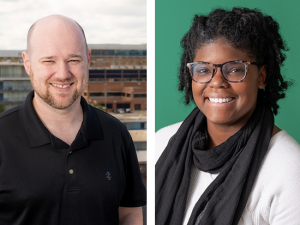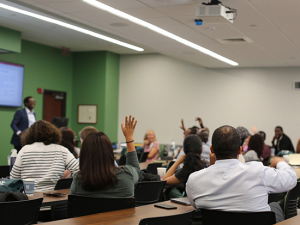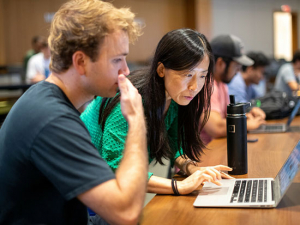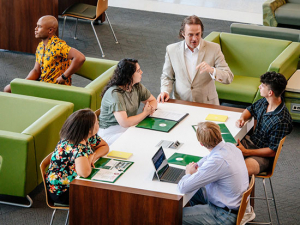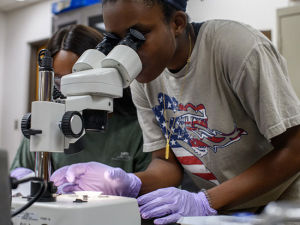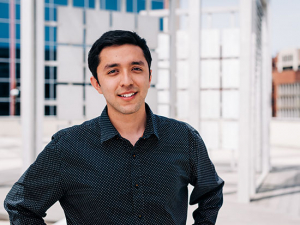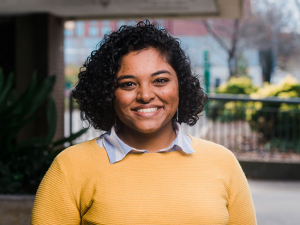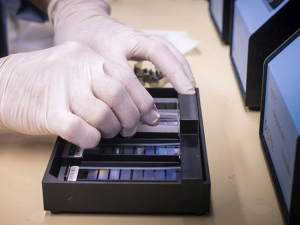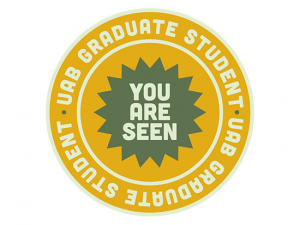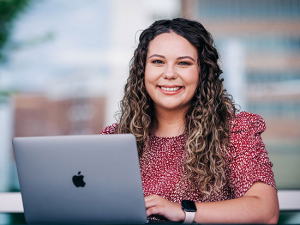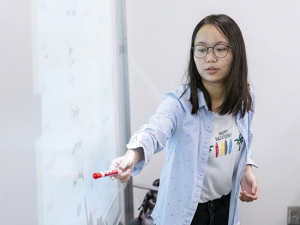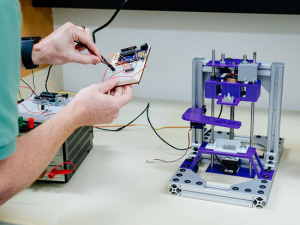Forty years ago, the Department of Biomedical Engineering began in the basement of Cudworth Hall, located on the southeast corner of 19th Street South and University Boulevard, with a faculty of four professors and a staff technician. In the decades since, the program has grown exponentially — spanning three buildings and nearly 20,000 square feet of laboratory space.
Now the only joint department between the schools of Engineering and Medicine, BME ranks consistently in the top five nationally in National Institutes of Health (NIH) research funding, and from 2016 to ‘18, it ranked in the top five in the NIH’s Blue Ridge Institute for Medical Research rankings.
Scroll through the photos below, courtesy of UAB Archives, to learn more about the department through the past 40 years, and learn more in the fall isssue of UAB Medicine Magazine.

Louis Sheppard, Ph.D., pictured in 1980, was the first chair of UAB’s Department of Biomedical Engineering. Sheppard developed computer-based systems for intensive care that used closed-loop feedback control of cardiac and vascular pressures.

Longtime UAB educator Jack Lemons, Ph.D., (far left) gathered with renowned biomedical engineer Robert Baier, Ph.D., (second from left) and cardiac and vascular surgeon Michael DeBakey (second from right) for the 1983 Biomedical Materials Symposium.
Lemons has spent more than 40 years at UAB, during which he served on more than 300 graduate student dissertation, thesis and research committees as both chair and member, published more than 200 journal articles and delivered more than 600 presentations and abstracts at scientific meetings — almost all with student co-authors and co-presenters. The School of Engineering established the Dr. Jack Lemons Endowed Scholarship to honor him and his contributions to graduate education at UAB.

In 1987, engineering faculty Jay Goldman, D.Sc. (far left), and Sheppard (second from left) watched fellow professor Martin McCutcheon (seated) demonstrate the university’s new expert system from Digital Equipment Corp.
Goldman joined UAB in 1984 as dean of the School of Engineering and initiated the first strategic-planning process to develop the school’s mission and goals. He also established the first Engineering Council and Engineering Foundation, both comprising industry leaders who provided advice and support for the school. Goldman organized the first alumni group for engineering graduates and had dual appointments as a professor in the departments of Civil, Construction and Environmental Engineering and the School of Health Profession’s Health Services Administration, among other roles. He was named a Distinguished Service Professor in 2002 and was appointed professor emeritus of engineering in 2013.
Martin McCutcheon, also a professor emeritus of biomedical engineering, was department chair from 1998 to 2000.

In 1989, Linda Lucas, Ph.D., the first to be earn UAB’s doctoral degree in biomedical engineering (far left), BME faculty Rose Scripa, Ph.D., (second from left) and Martha Bidez, Ph.D., (far right) together with then-national president of the Society of Women Engineers Suzanne Jenniches (second from right), presented James Woodward (center) with the Rodney D. Chip Memorial Award from the Society of Women Engineers, given to a man or company for a significant contribution to the acceptance and advancement of women in engineering.
After joining the faculty, Lucas ascended the administrative ranks from department chair to dean of the School of Engineering and finally to university provost, earning degrees along the way. Notably, her research career began in the School of Dentistry Department of Biomaterials and the School of Medicine Division of Orthopaedic Surgery before she took a faculty position in the School of Engineering.
Scripa, an expert in the field of materials science and engineering, spent more than more than 38 years with UAB, beginning as assistant professor and advancing to professor, associate dean and associate provost. Her experiments were flown aboard U.S. space shuttle flights, and she served on boards and committees for NASA microgravity research. For her service to UAB, she received the Ellen Gregg Ingalls/UAB National Alumni Society Award for Lifetime Achievement in Teaching in 2007, and in 2016 she was named Distinguished Service Professor emerita in the School of Engineering.
Bidez led a distinguished career in both the academic and private sectors that established her as one of the nation’s foremost authorities in safety engineering. The Birmingham native earned multiple engineering degrees from UAB: a bachelor of science in mechanical engineering in 1985, a master’s in biomedical engineering in 1983 and a doctorate in 1987. Soon after, she became a senior scientist with the UAB Injury Control Research Center and was the first woman to be named “Young Engineer of the Year” by the Engineering Council of Birmingham in 1988. After spending several years in private industry as the founder and CEO of BioHorizons Implant Systems, Inc., Bidez returned to UAB to create the School of Engineering’s Advanced Safety Engineering degree program. She died in 2016.

In the early 2000s, BME Chair Ernest Stokely, Ph.D., recruited Raymond Ideker, M.D., Ph.D., (pictured in 2001) and his entire team from Duke University, creating new opportunities in the area of cardiac electrophysiology. Ideker was the Jeanne V. Marks Professor of Medicine, Physiology and Biomedical Engineering and directed the Cardiac Rhythm Management Laboratory, which sought to develop better understanding of the basic electrophysiologic mechanisms in animal arrhythmias and to improve medical and surgical treatment of arrhythmias caused by coronary artery disease in humans. Ideker is professor emeritus in the Division of Cardiovascular Disease.

